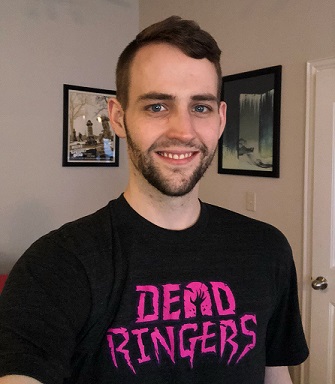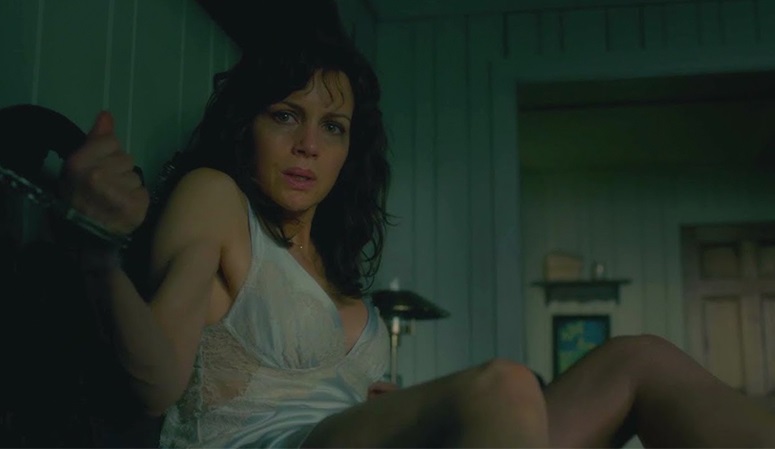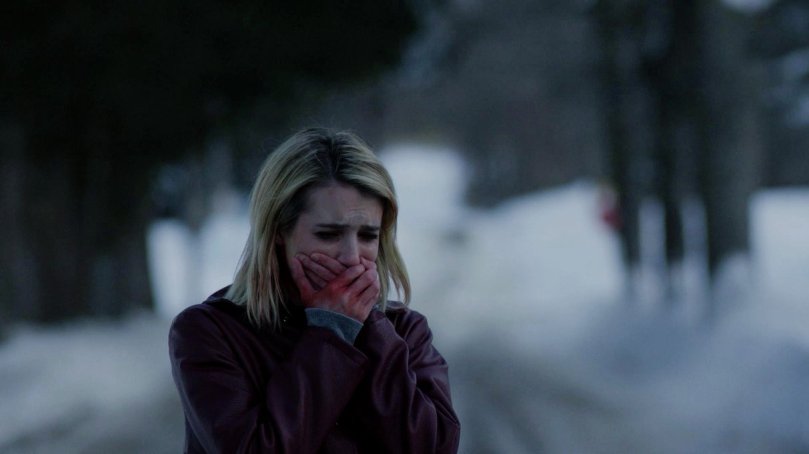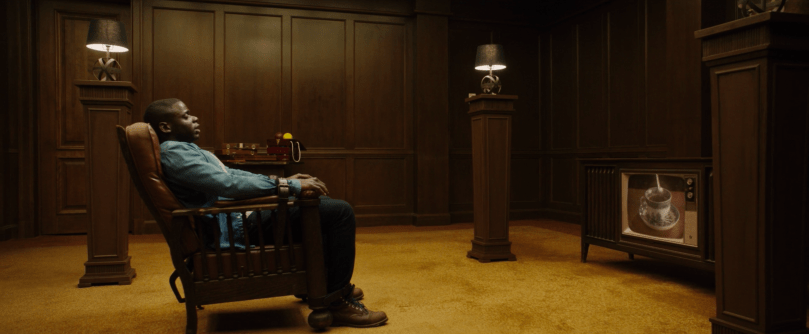By: Nolan McBride

2017 was a great year for horror. You’ve probably already had two months worth of folks telling you as such — including some that have written for this site — but even now it’s still an understatement. I had to leave off a number of great horror flicks, which is why my honorable mentions is almost as long as my regular list, but I wanted to highlight the movies that resonated with me the most, the ones I want to champion.
One of the larger themes of my list, it seems, is perspective. In much the same way that the Dead Ringers podcast explores similar stories from different perspectives, 2017 was all about new perspectives and new voices. We’ve already produced episodes for a number of these releases — and have a few more on deck — so these movies are certainly not wholly original in concept. What’s new, however, is the perspective from which these stories are being told. Rather than just swapping perspectives to avoid telling the same story, these movies offer new insights on old subjects — racism, gender, coming of age, loneliness, and more.
Another theme is first-time filmmakers. 4 of my top 5 movies were directed by first-timers. Knocking a first at-bat out of the park is not a new concept to horror, but it’s always great when the genre gets an infusion of new blood to ensure it stays relevant for years to come.
Anyway, I won’t hold this up any longer, so here are my favorite horror movies of 2017:

10. The Shape Of Water
The Shape Of Water is, quite simply, magical. Even knowing it would be Guillermo del Toro’s personal, romantically-inclined homage to Creature From The Black Lagoon, I didn’t realize just how much I needed this slice of old-fashioned, fantastical cinema. Its setup recalls B-movies from the mid-twentieth century, perfectly emulating the Cold War era in which it takes place, but infused with modern sensibilities and a rather candid, adult attitude towards sex and sexual desire. It is both an escape from our tumultuous reality and a reminder of how little things have actually changed in the half century since its events occurred. Despite that somewhat bleak remark, like its characters, del Toro is determined not to give up or let beautiful, vulnerable things be destroyed by evil men.
The Shape Of Water feels like the movie Guillermo del Toro has been building towards his entire career. It blends his fairy tale sensibilities with the scope of his major studio movies, and all of it is anchored by his greatest passion: monsters. Far from being a traditional horror movie — and some might argue it’s not a horror movie at all — The Shape Of Water asks us to fall in love with its monster instead of fear it; however, like many monster movies, it simultaneously highlights the ways in which humans are just as monstrous, if not more, than the featured creatures. It’s a beautiful movie about outsiders and their struggle to be accepted and loved, much like the misunderstood monsters that del Toro was so fascinated by growing up.
(The Shape Of Water is currently available on Blu-ray.)

9. The Girl With All The Gifts
What sets The Girl With All The Gifts apart from the endless horde of zombies movies — and why it’s particularly important for a movie in 2017 — is its hope and compassion. There are some legitimately scary moments courtesy of an interesting take on zombies involving fungal infection, but the movie is full of empathy. The engine behind this is Melanie, who is one of a new breed of zombies, born from an infected human but retaining her intelligence and humanity despite a craving for flesh. In her feature film debut, Sennia Nanua delivers an incredible performance, perfectly embodying Melanie’s innocence and unshakeable optimism, even in the face hatred, fear, and possible vivisection at the hands of Glenn Close’s Dr. Caldwell, who is hell-bent on finding a cure for the infection. Additionally, the movie has two other standout performances in Gemma Arterton, as Melanie’s teacher and surrogate mother, and Paddy Considine, as the initially hard-ass army sergeant who slowly softens over time.
One of the reasons this movie appeals to my particular tastes is its premise shares elements with my favorite movie of all-time, Day Of The Dead, as well as one of my favorite books, Never Let Me Go. Unlike a lot of the movies and TV shows that have modeled themselves after Romero’s Dead movies, The Girl With All The Gifts understands that it needs more than just conflict to drive its story, it needs characters with nuance. No character — not even Glenn Close, who is as close to an antagonist as the movie gets — is outright evil and their motivations are relatable, if at times troubling. The script is well-written thanks to Mike Carey, who wrote the book it’s based upon (as well as my favorite run of X-Men comics). Carey takes the story into new territory by the end, making clear that maintaining a status quo is not enough to justify horrible actions and sometimes you have to burn it all down and start anew — a sentiment a lot of us can relate to after surviving 2017.
(The Girl With All The Gifts is currently streaming on Amazon Prime.)

8. Gerald’s Game
Gerald’s Game might be the most dread-filled experience I had with a horror movie in 2017. Though Mike Flanagan deserves plenty of credit for the atmosphere he crafts, a lot of this dread comes straight from Carla Gugino’s outstanding (and, frankly, underappreciated) performance. From the first time we meet Jessie, her apprehension is palpable, whether it’s a nervous glance or redirecting Gerald’s attempts at foreplay into more innocent gestures. She displays strength when needed, but her greatest asset is her vulnerability, which is essential to the nature of her character’s plight as she’s handcuffed to a bed in a nightgown and left to die. Like with his recent film Hush, Flanagan once again faced the challenge of conveying a robust character arc with a minimal toolset. Meanwhile, Gugino has to deliver more than one distinct performance and carry the whole narrative and thematic thrust of the movie on her back. And dammit she does.
Beyond Jessie’s struggle for survival — which includes one of the most difficult scenes in recent memory that I had to watch through the cracks in my fingers — Flanagan injects this movie with some real horror chops without ever losing sight of the character at its center. He tackles the psychological aspects well, finding clever ways to develop Jessie’s character, demonstrate her inner conflict, and resurface old trauma. He layers in scenes involving the questionably real Moonlight Man, whose mostly obscured appearance in the darkened corner of the bedroom sent shivers up my spine and resulted in one of the scariest moments in horror in 2017. And, not content to settle for traditional scares, Flanagan even delves into some real life horror, making a calm discussion between a father and daughter so uncomfortable you will squirm. That Flanagan can pull off both visceral and cerebral scares while servicing his character and tackling heady topics like sexual abuse is a testament to the movie’s quality, so much so that it even overcomes a complete tonal misfire of an ending. I’m aware it comes directly from Stephen King’s book, but the story would be stronger if it ended 10 minutes earlier. As it stands, it’s still one of the best horror movies of last year.
(Gerald’s Game is currently streaming on Netflix.)

7. Happy Death Day
Happy Death Day takes three things that I love — high school/college-set horror movies, slasher movies, and high concept stories — and blends them all together to make one of the most entertaining and fun movies of 2017. It introduces us to an initially shallow and unlikeable slasher movie character that, through the course of reliving the same day again and again, becomes a lovable and well-rounded character. Though it might first appear like a cheap attempt to capitalize on another popular movie’s hook, Happy Death Day actually employs its high concept in order to play with the tropes and expectations of the slasher subgenre. It draws you in with its twofold mystery — who is killing Tree and why is she stuck in this time loop — and then keeps your attention with a clever script, great energy (thanks to the direction of Christopher Landon), and a charismatic lead performance.
While the specifics behind Tree’s (Jessica Rothe, La La Land) temporal imprisonment are never fully explained — it seems they’re saving this for a potential sequel, which I am on board for — it never feels like a cop out because what we’re really here to see is Tree’s growth, as well as the blossoming romance between Tree and Carter, played by the equally charming Israel Broussard. The strength of Tree and Carter’s characters is heightened by the (intentionally) one-dimensional quality of much of the supporting cast. By the end of the movie, Tree has transcended her slasher roots to the point that the killer’s motives come across as cartoonish. None of this is to say that the movie’s horror bona fides don’t matter; instead, Happy Death Day utilizes its trappings to tell a refreshing, positive story about trying to be a better person. That we get to watch Tree die in so many different, sometimes hilarious ways is just the icing on the cake.
(Happy Death Day is currently available on Blu-ray.)

6. Alien: Covenant
If you come to Alien: Covenant expecting a course correction from Prometheus that brings the Alien prequel series back in line with the originals, you might leave the movie feeling conned. Similarly, the humans in Covenant are tricked into exploring a habitable but desolate world that appears too good to be true, only to find themselves ensnared in the web of a rather unusual spider. Despite what its marketing would suggest, Alien: Covenant is not actually about a crew of colonists trying to find a new home. Instead, it’s a story about David, Michael Fassbender’s returning android from Prometheus, collecting a new set of specimens upon which he can experiment. With David as his proxy, Ridley Scott uses Alien: Covenant to meditate on the act of creation, faith (or his lack thereof), and the legacy of his creations.
If there’s a return to form in Alien: Covenant, it’s embodied by the movie’s pessimism and cosmic indifference. In the original Alien, the source of this bleakness was twofold: a perfect organism bred to kill as well as a corporation that prioritized scientific discovery over human life. In Covenant, David has taken on the role of the corporation, only his interests aren’t tied to greed or profit; David is transfixed by creation at any cost and, when applicable, destruction. His mad scientist tendencies are amplified by the film’s gothic overtones, whether it’s David’s constant quoting of Byron and Shelley or the setting being the gloomy ruins of an Engineer temple where he resides and creates his unholy bestiary. The smugness and contempt David (and maybe Scott) has for humanity are reflected in the movie’s characters — foolish, prone to temptation, and still reliant on antiquated systems of belief.
Though it creates more questions than it answers regarding the series’ mythology, Alien: Covenant might be the franchise entry most thematically in line with the original. It uses the framework (almost to a T) and ideas of the original movie to constantly upend expectations in audacious ways. The movie is not without its flaws — namely, some iffy CGI that feels particularly egregious in a franchise that was built upon practical effects, as well as some of the character work — but damn if I don’t find it endlessly fascinating to mull over.
(Alien: Covenant is currently streaming on HBO.)

5. The Blackcoat’s Daughter
The Blackcoat’s Daughter follows in the grand tradition of long-delayed horror releases. Previously known as February, Oz Perkin’s directorial debut — which was technically released after his second film, I Am The Pretty Thing That Lives In The House — has been awaiting distribution since 2015, all the while building hype thanks to word of mouth from folks like Shock Waves’ Elric Kane. While my personal expectations may have prevented me from embracing it the first time, subsequent revisits have convinced me to spend my evenings in a dank basement worshipping a creepy boiler, Satan, and The Blackcoat’s Daughter.
This slow-burn Satanic thriller is restrained, haunting, and saturated with dread and a wintry atmosphere (aided by an unsettling score from brother Elvis Perkins). Told in three parts across multiple timelines and perspectives, Perkins keeps his cards close to the vest until the climax when the consistently bubbling tension boils over and erupts into violence. Thanks in part to its twisting and complex narrative, it’s a movie that grows with each subsequent viewing. Kiernan Shipka and Emma Roberts give the performances of their careers, imbuing troubled characters with a tragic sadness. The Blackcoat’s Daughter examines loss, but the ways in which its characters cope is surprising and unique. Despite being a rather dark story about possession by — or submission to — dark forces, it’s full of melancholy that will linger long after the credits roll.
(The Blackcoat’s Daughter is currently streaming on Amazon Prime.)

4. Lake Bodom
Lake Bodom is a Finnish slasher inspired by real-life murders that occurred in Finland in the 1960s. What starts as yet another movie about a group of teens going camping turns into a twisty examination of the way stories — whether urban legends or rumors — are shared and passed on, modified slightly as they move from source to source. Its very simple setup grows in complexity as the motivations of the four lead characters are slowly teased out and revealed, each of them there for their own personal reasons. Even though the movie jettisons a few of the themes it sets up early on, it never failed to surprise, delight, and keep me on my toes.
Lake Bodom is not unlike a number of other popular slasher films. Like Jonas Govaerts’ 2014 movie Cub, Lake Bodom often resembles a Friday The 13th movie filtered through the style and sensibilities of a European filmmaker and what a difference it makes. The movie is full of beautiful cinematography. A forest full of impossibly tall trees creates stark lighting that imbues the movie with a dream-like quality. An underwater sequence is equal parts gorgeous and terrifying as the pitch black waters envelope one of the protagonists. It’s creepy, tense, and at times terrifying as you’re never quite sure whether the kids are alone in the forest or whether a killer — maybe the killer from the original murders — is stalking their every move. It’s like the legend of Jason Voorhees transposed into the real world. If Paramount ever gets their shit together and wants to make a Friday The 13th movie with some interesting talent behind the camera, they should give Taneli Mustonen (or Jonas Govaerts) a call.
(Lake Bodom is currently streaming on Shudder.)

3. The Transfiguration
The Transfiguration is not a movie I expected to like, let alone love, but it was such an unexpected gut punch. A vampire story (or maybe not) that’s equal parts Martin, Let The Right One In, and Henry: Portrait Of A Serial Killer, The Transfiguration follows isolated orphan Milo as he navigates the dangers of life in New York City housing projects while trying to satisfy his unusual bloodlust. Milo not only thinks he is a vampire, he’s obsessed with vampires, spending his waking hours consuming every drop of bloodsucking lore he can get his hands on while fleshing out his own interpretation of the monster across several notebooks. Michael O’Shea’s directorial debut — like the film’s protagonist — uses the entirety of the vampire subgenre to explore loneliness, grief, and the power of myth as a means to make sense of trauma.
Milo’s solitude is disrupted after he develops an unlikely relationship with another orphan, Sophie, whose sincerity and desire for emotional connection throw Milo’s sociopathic tendencies into sharp relief. Both Eric Ruffin and Chloe Levine are fantastic in their respective roles; Ruffin’s stoic, controlled performance is one of the absolute best of the year. Milo’s flat affect makes him hard to read, but Ruffin communicates so much through the subtlest of gestures. The measured quality present in Milo’s movements and expressions extends to O’Shea’s entire directorial approach. Though it’s shot in real New York City locations, its story and characters exist on the fringe, almost a completely separate plane from the bustling metropolis of which we we typically think. The hum of the city can always be heard, even underneath the at times droning, dread-inducing score. The movie is genuinely shocking and disturbing at points, made all the more jarring because of how much I came to empathize and sympathize with Milo, who I suspect will resonate with any horror fan that has ever used horror to escape their own isolation. Though he’s made himself into a monster, Milo is a tragic figure whose final actions will stick with you long after the movie ends.
(The Transfiguration is currently streaming on Netflix.)

2. Raw
Despite gaining notoriety as a gross-out classic on the festival circuit, Raw is actually a beautiful, tender horror movie about adolescence and sisterhood. And cannibalism, obviously. The hardest scenes to watch aren’t difficult because they’re too extreme in content, but because the situations presented will make you so uncomfortable. This may seem a minor distinction, but it will be clear to anyone who has seen the movie’s infamous “finger scene.” Its discomfort would only be a minor success if we did not care for the movie’s characters so much. Garance Marillier holds nothing back as fresh-faced veterinary student Justine, pushing herself to places few young actresses would be willing to venture, let alone be able to pull off, and she does it while remaining vulnerable and relatable. Ella Rumpf is equally great as Justine’s sister Alexia, playing a character that is both meaner and more sympathetic at the same time. The relationship between the sisters is the emotional core of the movie. It’s rocky at times, resulting in some scuffles that leave scars, but at the end of the day, family is the only thing upon which either outcast can rely.
One of the most striking things about Raw is just how assured it is coming from a first-time feature filmmaker. Julia Ducournau tackles so many facets of the experience of coming of age as a woman — from bodily transformation to sexual awakening to societal expectations of women, and everything in between — but the movie still has plenty of universal appeal. What makes the movie shine is the way in which she handles the story, invoking and exploring ideas without feeling the need to tie all of its themes and motifs together neatly with a bow. Raw is an intentionally impressionistic movie, asking viewers to meet it halfway and make connections themselves or find their own meaning. In other words, Ducournau gives the material room to breathe and it’s all the better for it. Her confident grip on the thematic content is matched only by her technical prowess, which she demonstrates most notably in one of the most impressive long-takes in recent memory. It would be impossible for me to qualify how much I love Raw without at least mentioning Jim Williams’ score, which never fails to reduce me to a melancholic, emotional lump any time I hear it. Between Ducournau’s direction, Marillier and Rumpf’s performances, and Williams’ score, just thinking about Raw has a tendency to send me into blissful reverie.
(Raw is currently streaming on Netflix.)

1. Get Out
It is almost impossible to separate my love for Get Out from my love of Jordan Peele. Throughout his previous projects — but especially in Key And Peele — Peele (along with his collaborators) has demonstrated a knack for satire, his insights on race and masculinity in pop culture, in particular, elevated by a keen sense of detail and craftsmanship. That same attention to detail and craft (and even humor) are on full display in his debut feature film. The first time you see it, you’ll cringe (or laugh) at most things said by anyone that’s not protagonist Chris Washington (played in a star-turning performance by Daniel Kaluuya), wince every time someone touches or glances at him in an uncomfortable way, and dread every new revelation he uncovers as he tries to make a hasty exit from the increasingly unsettling Armitage estate.
With repeat viewings, the movie takes on additional layers with much of its dialogue working as double entendre. It’s not too difficult to grasp the movie’s overt message, but those that pay close attention will find themselves richly rewarded by how the movie communicates that message, supporting its ideas with details that add substance and weight. Get Out is thematically dense and cohesive in a way that only someone with the lived experience could conceive and we’re all better for having empathized with a different perspective (and for white liberals like myself — having reflected on our part in propagating these issues). It would have been easy for a competent horror movie addressing racism to prosper in 2017, but it’s much more difficult to be this incisive and pointed while still keeping your audience entertained. I cannot wait to see what Peele has up his sleeve next.
(Get Out is currently streaming on HBO.)
Honorable Mentions: Tragedy Girls, mother!, IT, Boys In The Trees, The Untamed, A Dark Song, XX
Favorite 2018 Movie of 2017: The Endless
Favorite 2016 Movies of 2017: The Eyes Of My Mother, The Autopsy Of Jane Doe
Favorite Discoveries: Suspiria, Deathdream, Demons, The Blob (1988), Invasion Of The Body Snatchers (1978)
Favorite Scores: Raw, The Shape Of Water
